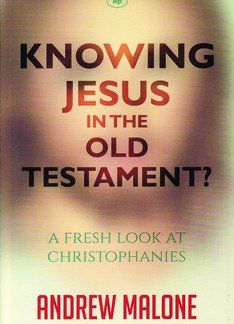The purpose of this book is to revisit and challenge the common evangelical understanding that the visible appearances of God in the Old Testament were in fact appearances of the pre-incarnate Christ.
Malone believes this is an assumption built on shaky exegesis and circular reasoning. While in no way denying the Son’s pre-incarnate activity in the world, he sees no compelling reason to identify the Son, as distinct from the Father or Spirit, in Old Testament theophanies.
According to Malone, the New Testament teaching is that God is unseen but not inherently unseeable. He points out that the Father and the Spirit are not always imperceptible.
At Christ’s baptism, for example, the Father spoke audibly and the Spirit appeared in the form of a dove. He reasons that it is therefore unwarranted to hold that neither Father nor Spirit can have appeared visibly to men, and seeks to show that appearances are consistent with passages such as John 1:18 and John 12:41.
In the Old Testament, Malone examines in particular the ‘Angel of the Lord’ appearances, concluding that they do refer to God, but do not (as is often suggested) necessarily distinguish two persons, the Lord and the Angel.
Malone repeatedly claims that each piece of biblical evidence, taken in turn, is ‘insufficient’ to support the view that it was Christ who appeared to men in Old Testament days.
I do not feel he properly acknowledges the cumulative force of the scriptural data, and so am not convinced by the case he presents against Christophanies. He is too keen to suggest that its proponents adopt their stance from convenience or mere tradition. He is also overly cautious about reading the Old Testament with the benefit of New Testament hindsight.
Though addressing a technical subject, Malone writes in an easy, even entertaining style. Sometimes his analogies from film and detective novels seem a little forced and out of tune with the great theme of God’s dealings with mankind. Also, he does not always follow up the interesting wider questions he raises about the nature of God and how he is revealed in Scripture.
This study could though be useful for anyone wishing to explore this particular subject in detail. It exposes lazy thinking and provokes more careful investigation of God’s self-revelation prior to Christ’s birth.




